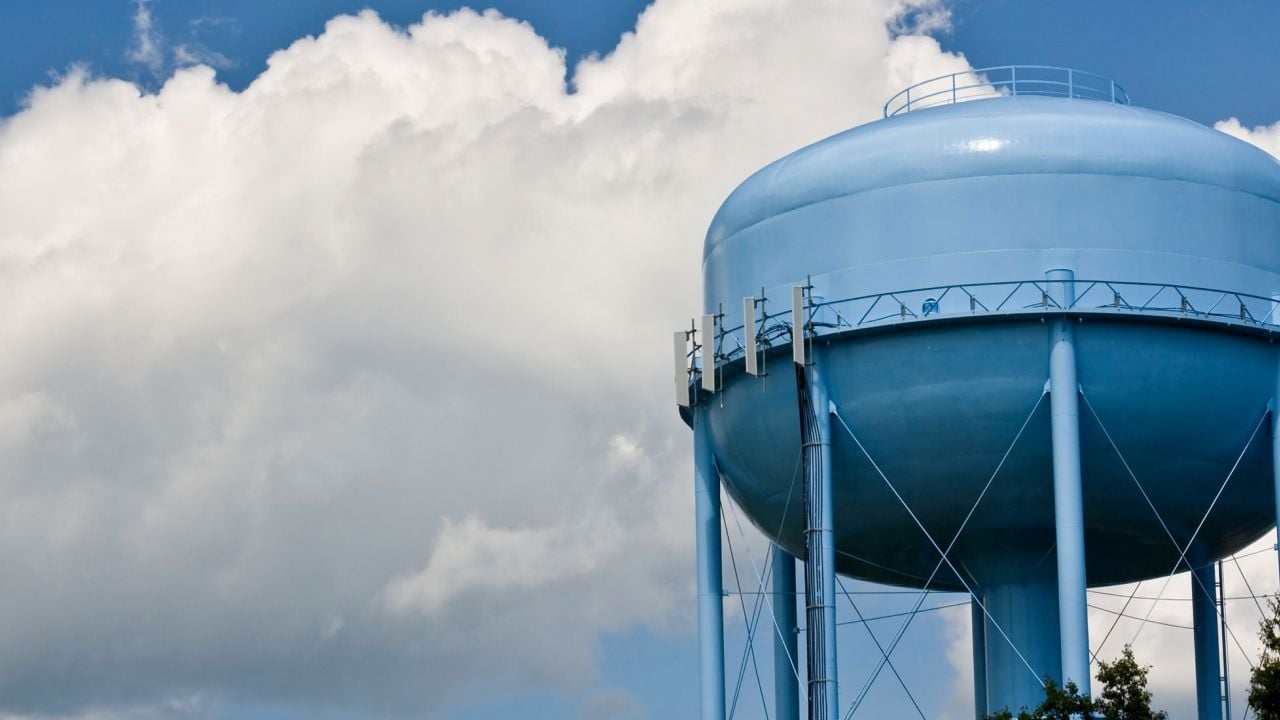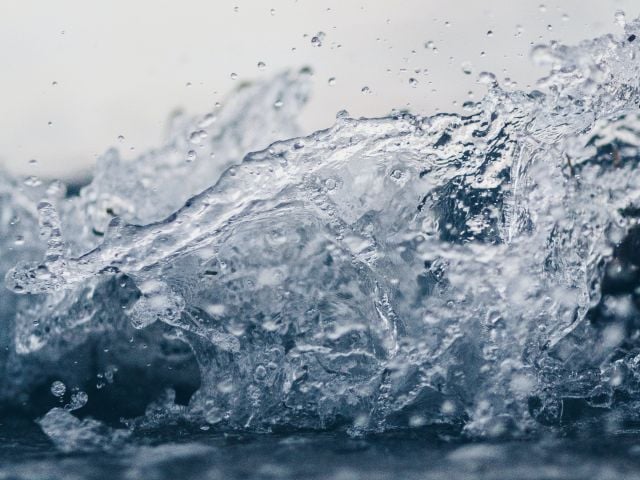
View and Download the report here: Polluter Privilege
Across Ohio, small and large businesses have polluted public drinking water supplies with impunity. An Environmental Working Group analysis of Ohio EPA data and an internal, unpublished report from the Ohio Environmental Protection Agency (Ohio EPA) shows that industries have contaminated at least 54 public water supplies, but have been held responsible for contributing toward cleanup in only three cases.
The 54 water systems are priority cases under the state’s hazardous waste remediation program. More than 280 Ohio communities have detected industrial contaminants in their tap water since 1994, according to monitoring data from the state (Appendix A). For most of these drinking water systems, there is no information available to the public on what, if anything, OEPA has done to identify polluters, or clean up the water.
The cost of cleaning up tapwater polluted with industrial chemicals can be substan- tial. The City of Dayton has spent millions of dollars to treat its tap water supply, stripping industrial contaminants from as many as five industries in 13 treatment units called air stripping towers. Middletown in Butler County has spent over $1 mil- lion to clean up tap water contaminated by a facility that manufactures printing equipment. The City of Wooster in Wayne County has spent $1.3 million to test and treat its water supply, with the polluters contributing nothing.
Compared with their negligence in cleaning up community water supplies, many Ohio companies are much more willing to clean up tap water when their employees and management have to drink it. Businesses have taken action on their private water supplies in 85 percent of the cases for which we have information. In contrast, companies are monitoring or working to clean up their contamination of public water supplies, just six percent of the time.
Failure to Enforce the Law
Communities are subsidizing cleanups for such multi-billiondollar corporations as GeorgiaPacific, Buick-GMC, Pennzoil, British Petroleum, Grimes Aerospace, Siemens Energy and Automation, Kimberly Clarke, General Electric, Unical Corporation, and Ashland Chemical.
This situation has been forced upon community water suppliers by Ohio EPA’s failure to enforce the law. Although Ohio’s water pollution and hazardous waste laws give Ohio EPA clear and ample authority to prosecute anyone who contaminates drinking water, agency leadership has consistently failed to exercise it. Instead, agency leaders appointed by former Governor Voinovich and current Governor Taft have adopted a formal policy of inviting polluters to negotiate cleanup terms with the agency. If polluters decline, which is increasingly the case, the agency almost never pursues litigation or tougher measures to get responsible businesses to clean up public drinking water supplies.
This policy has effectively shifted the power to control cleanups from the agency to the polluters, while at the same time crippling the ability of Ohio EPA staff to help communities struggling to provide safe water for their residents
In a document prepared for former Ohio legislator Joy Padgett on contaminated public water supplies, the agency complains no less than five times that it lacks the authority to either investigate or enforce cleanups of public water supplies (OEPA, 1998). The fact is, the law gives them ample authority. Ohio EPA leadership has just chosen not to use it.
Utilities Strive to Deliver Clean Tap Water
In every case that EWG investigated, water suppliers are taking the necessary steps to ensure their tap water meets legal standards for the protection of human health. Sometimes this involves monitoring the pollutants to ensure that their concentrations in water supply wells are not increasing. In other cases, water suppliers operate groundwater pump-and-treat systems, at a cost they are forced to pass on to their customers. Through their efforts, residents are ensured that the water they drink meets state and federal contaminant standards.
Unfortunately, it is nearly impossible to remove all of the contamination from a polluted water supply. EWG found 26 communities that continue to drink water with low levels of industrial pollutants, despite the desire and best efforts of water suppliers to provide perfectly clean water (Table 1).
It is not illegal to serve water containing industrial contaminants. A certain amount of contamination is allowed under the law, and these 26 communities all meet the legal limits.
Legal, however, does not necessarily mean safe. Legal levels fail to account for the potential additive health effects of multiple chemicals and the vulnerability of children. Moreover, legal levels are in many cases a compromise between public health and treatment costs. For communities with “legal” levels of pollution in their tap water, health effects are still a concern.
Children are among the most vulnerable to the health consequences of this failed system. Of the 54 contaminated public water supplies, 46 are town water supplies (Tables 2 and 3), with schools and daycare facilities being served the same quality of water as the rest of the town. Five schools and two daycare centers using private wells have also had their tap water polluted with industrial contaminants (Table 5). Some childhood diseases are linked to specific contaminants found in Ohio public water supplies. For instance, trichloroethylene, or TCE, an industrial solvent believed to cause leukemia, has been found in at least 21 of the 46 contaminated community water supplies (Tables 2 and 3).
The contaminants found in Ohio’s public water supplies are almost always industrial solvents known or suspected to cause cancer, birth defects, nervous system disorders and a host of other health problems. TCE was found in 21 public water supplies, followed by tetrachloroethylene (PCE) in 19, and two forms of dichloroethylene (cis-1,2-DCE and trans-1,2-DCE) in 17. Vinyl chloride, the most potent carcinogen of all the chemicals in these water supplies, was found in the tap water supply in at least six towns.
New federal right-to-know rules would give citizens in these communities critical information for protecting the health of their families in the form of an annual tap water quality report mailed to their homes each year. U.S. EPA has offered state governors the chance to waive the mailing requirement for towns of under 10,000 people. So far Governor Taft has not signed the waiver. It is critical that he remain firm on this issue, since over half of the Ohio towns with polluted tap water supplies have fewer than 10,000 people. These reports will be vital in a state where polluting industries go largely unpunished and polluted drinking water sources remain contaminated.
The first priority must be for the polluters to provide uncontaminated drinking water to the affected communities. It is not enough for people to be provided with tap water contaminated with supposedly “safe” levels of industrial contaminants. In all cases where the polluter has been identified, they must pay to provide clean tap water to all towns whose water supplies they have contaminated. Payment should begin immediately and be retroactive to cover all costs incurred in dealing with the problem.
In many cases, however, the responsible party cannot be identified, or when identified, cannot afford the cleanup costs. To protect the public in these situations, the Ohio Legislature should create a state superfundstyle trust fund supported by a surtax on big business, similar to the federal model, which can be used to pay for cleanup of drinking water supplies and for providing communities with clean water in the interim.
The public has a right to know the names of the polluters in cases of contaminated tap water supplies. Where the polluter is known, water suppliers should identify the polluter by name in their annual water quality reports required under the Safe Drinking Water Act, the first of which is due to customers of public water suppliers by October 1999.
View and Download the report here: Polluter Privilege


